Shortly after Nicholas "Decktech" Weiss teased it, Hearthstone Designer Gallon just confirmed that next week will see the first balance patch of the Voyage to the Sunken City expansion.
In particular, this balance patch is going to address problematic cards in both Standard and Wild. Here are all the nerfs (and a ban!), which will go live on Tuesday 24th:
- Kael'thas Sunstrider - Now each third spell you cast costs 1 (up from 0) - It's a buff revert.
- Switcheroo - Now swap only the Health of the drawn minions (not the Attack anymore).
- Moreover, Switcheroo is going to be banned in Wild.
- Raid the Docks - Secure the Supplies now takes 3 Pirates to complete (up from 2).
- Pufferfist - Health is now 3 (down from 4).
- Miracle Growth - Cost is now 8 mana (up from 7).
- Kazakusan - Now reads "Battlecry: If you’ve played 4 other Dragons this game, craft a custom deck of Treasures."
Quote From GallonHS Hey everyone, have an update for y’all regarding balance changes. 4/26 (This upcoming Tuesday) changes to both standard and wild will go live.
WILD:
- Kael'thas Sunstrider is getting a textbox revert to Every third spell you cast each turn costs (1).
- Switcheroo is banned. (Alongside a change in Standard.)
Both of these changes are aimed at protecting the long-term health of the format.
STANDARD:
- Pirate Warrior Questline is getting an additional number on its final step. (3/3/2 ->3/3/3) (Secure the Supplies)
- Pufferfist is losing a health, from 3/4 to 3/3.
- Switcheroo now swaps Health only instead of stats.
- Miracle Growth now costs 8 Mana, up from 7.
- Kazakusan’s activation requirement is getting changed. He’ll now read “Battlecry: If you’ve played 4 other Dragons this game, craft a custom deck of Treasures.”
- Kazakusan has been playing a critical role in Druid for the past couple months, fulfilling a similar role toDeathstalker Rexxar as an entire win condition in one card.
- Going into our balance meetings, we knew we wanted to soften Druid across all ranks, and there were multiple angles that could accomplish that.
- While we could have nerfed their survivability, we worry that will lead to a more polarized metagame overall.
- We landed on a Kazakusan effect change as it should lead to healthier play patterns both playing as and against Druid.
- We also wanted to make sure that Dragon-focused decks could still tap into Kazakusan as a powerful top end piece.
- Playing 4 Dragons is a fairly hefty requirement but should be achievable in most Dragon strategies.
Notable omissions from this list – Demon Hunter changes. We’ll be keeping a close eye on the post patch metagame to see how aggressive DH lists fare once slower decks are given a better chance.
Good luck to our Masters Tour competitors on your preparation, and I hope y’all keep enjoying Voyage to the Sunken City!
As usual, all the aforementioned cards will be eligible for a dust refund, which will not start before the patch will go live: do not disenchant those cards yet!
In the following articles, we're going to discuss the implications of these changes and what they could mean for both formats.
Now each third spell you cast costs 1 (up from 0).
Kael'thas Sunstrider is the Hearthstone card that has received the most updates:
- It started back in Ashes of Outland as a 6 mana 4/7 that discounted each third spell to 0.
- It was rapidly nerfed to 7 mana, although not accomplishing too much.
- Shortly after, Team 5 nerfed KT once more, making each third spell cost 1 instead of 0.
- Following this nerf, Kael'thas stopped seeing play for a very long time (almost two years), until...
- With the Year of the Phoenix sets' rotation, Kael'thas got reverted to its former glory.
It didn't take Wild players too much time to figure out Kael'thas Sunstrider was as broken as it was back in 2020, as they dusted off their updated versions of Miracle Druid with Barnes and all the other good tools printed in the meantime, allowing for OTK shenanigans as soon as turn 2 (yep, Lightning Bloom is a decent card).
We appreciate Team 5's courage for bringing back such a powerhouse, but we're also glad that they recognized it wasn't a healthy decision and didn't wait too much to step in and change things - long story short, this buff revert is a no brainer.
Now swap only the Health of the drawn minions (not the Attack anymore); banned from Wild.
We have mixed feelings regarding this change. On one hand, we couldn't agree more with the ban decision: Switcheroo into The Darkness-Stonetusk Boar was as stupid as efficient, allowing players to steal games as soon as turn 4 with the aid of Vivid Nightmare, Divine Spirit, Topsy Turvy and whatnot. Switcheroo was clearly designed this way for a multitude of reasons, but we are sure early game OTKs were not one of them.
Moreover, this spell represented the first "3 mana draw 2" for Priest, a class that has been historically terrible at drawing: we are aware that not banning Switcheroo, even with this nerf, would've been a short-sighted move (courtesy of the aforementioned Topsy Turvy), but we cannot help but be sad about a card which is yet to show all its implications.
Now for the Standard side of the change, things don't look as grim: sure, Switcheroo generated a bit of silliness in this format as well with Twin-fin Fin Twin-Deathwing the Destroyer nonsense, but it was definitely easier less difficult to manage. Standard will still have this draw tool at its disposal and will still be able to generate interesting Health swaps, potentially giving a cheap unit lots of Health. It's a nerf, do not misunderstand us, but it's not going to be the end of the world.
Secure the Supplies now takes 3 Pirates to complete (up from 2).
Raid the Docks's history in Standard has been quite amusing so far: it started out in United in Stormwind as a rather mild deck, only for it to completely turn the tables with the Deadmines Mini-Set, deserving its first nerf (Create a Distraction originally took only two Pirates to complete). Even though the deck has never been a strong meta contender since then, it has never really disappeared from the radars, especially due to The Juggernaut blowouts and Mr. Smite swings.
We'd still be telling the same tale, if only Voyage To The Sunken City didn't release yet another wave of Pirate Warrior support, allowing the archetype to come back, flood several portions of ladder and fill Reddit with salt posts.
Not only nerfing Raid the Docks once more will impact the deck's performances in Wild (where it's still one of the best lists), but it will also tone down its performances in Standard. One more Pirate to play is very likely to represent one more turn for Cap'n Rokara and The Juggernaut to come down, meaning that the value engine will start a bit later, giving other strategies more time to prepare themselves for what's coming and possibly close the deal before the inevitable happens.
Health is now 3 (down from 4).
Pufferfist was basically a Spider Tank that could grant AoE on AoE with much ease for classes like Rogue, Demon Hunter and Warrior who have access to an abundance of ways to attack with their heroes.
Early games against aggressive strategies, as well as Aggro mirrors, can turn out to be rather tricky, and a sequence of Arcane Explosions (that hit face too!) can turn the tides pretty fast, especially if you have ways to exploit the Pirate tribal tag like Rogue and Warrior can do - making sure to stick your own Pufferfist was a pretty good way to ensure you had the upper hand on your opponent.
Reducing Pufferfist's Health total to 3 will allow for more counterplay, as there will be more tools for players to deal with this unit, such as Holy Smite, Drain Soul and Bash.
Cost is now 8 mana (up from 7).
If you play Wildheart Guff on curve (maybe after a Wild Growth), you'll be able to play Miracle Growth quite ahead of time, granting you hand refill, a large Taunt to hide behind and a remarkable discount to Naga Giant. All of this was proven to be a bit too efficient, even with Overgrowth and Lightning Bloom rotated to Wild.
Bumping up Miracle Growth's cost by 1 mana will weaken Druid's strong curve, which distinguished the first weeks of the Sunken City meta, forcing players to think more whether they'll be safe or not in making such a play and allowing aggressive opponents to have one more turn to kill the Druid.
Now reads "Battlecry: If you’ve played 4 other Dragons this game, craft a custom deck of Treasures."
While Kazakusan was clearly meant to represent a finisher for Dragon-heavy decks, this unit incurred in the same fate of Zephrys the Great, which was included in non-Highlander decks just because its effect was so good that it was worth waiting for all duplicates in your deck to be drawn.
Following this parallel, you can easily notice how Kazakusan went down a rather similar path: Ramp Druid, its main exploiter, only run one Dragon in Raid Boss Onyxia, and on top of it each list featured a variety of other non-Dragon units like the Naga Dozing Kelpkeeper and Naga Giant, the Pirate Jerry Rig Carpenter and the tribeless Oracle of Elune and Ivus, the Forest Lord.
Together with Wildheart Guff's ramp effect, Kazakusan represented Malfurion's key component in winning slow matchups, as opponents could rarely handle both the Naga Giant waves and Kazakusan's treasures with just a 30-card deck at its disposal, giving Druid the edge on a bit too many games.
Unless Druid will start running more Dragons (which seems theoretically possible, although a little sketchy to us), it is fair to say that deck class will be forced to drop that kind of plan, going in hard on the Naga tribe, maybe with Hedra the Heretic becoming a more appealing unit for an extra board flood.
Finally, we think it's interesting to take a close look at Gallon's words, with which they explain how Team 5 was worried about turning Ramp Druid into a polarizing deck, losing against any aggressive strategy but absolutely crushing any form of late-game archetype, in a similar way to what Celestial Alignment Druid (this class again!) was a couple months ago - we don't want that to happen again.
What do you think of these nerfs? Are there any other cards you would've liked to see hit?


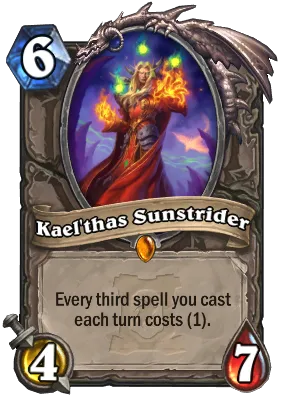
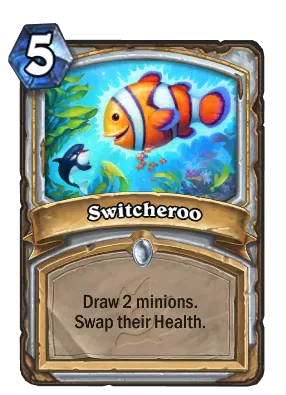
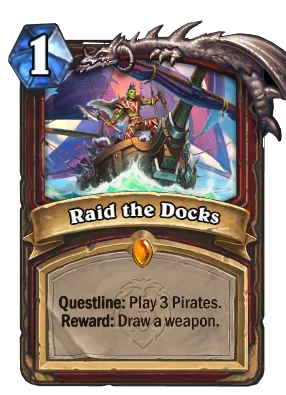
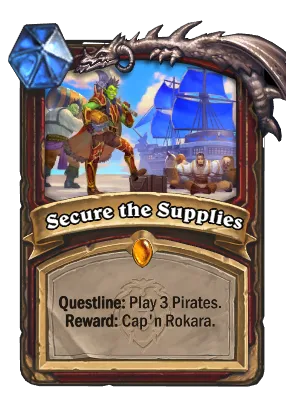
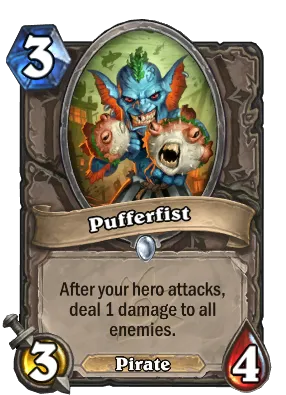
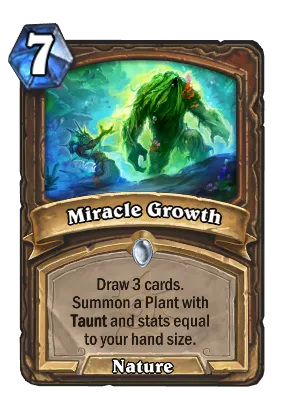
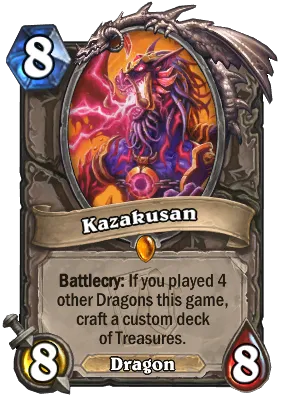


Comments
Any chance for a priest buff, especially priest quest this time around?
I can't help but notice there isn't a good T7 for priest other than that big murloc, unless you want to try and tick something around to play a bad expensive mount...
There's a quest that was very fair and NEVER competitive on ladder and does not even remotely risk being overpowered or too fast due to the way it's designed.
Even with all the sets before rotation it was meh, and now it's just ridiculously impossible to play.
Like, reducing the price of the Priest Colossal to 7 would be very reasonable, it's one of the worst colossals, most of them cost 7 and there are already tons of other good T8 for priest to include in their quest.
To be honest, 4 dragons really isn't much considering that the current ramp druid doesn't even play kazakusan until every single threat has been removed from their game. 2x Amalgam of the Deep basically does the job, and isn't really a slouch in doing other stuff whenever you dont need kazakusan to win (aggro games, etc.) Perhaps that's why they nerfed Miracle Growth along, but not touching Scale of Onyxia or simply reverting Nourish to 6 mana means we'll likely still be seeing ramp druid unless the nerf to pirate warrior introduces more decks that can beat druid.
My guess is that they will remove the Druid of the Reefs or perhaps one Wrath from the deck and put in double amalgams and pretend that everything is still solid. Team5 should've just made it 8 dragons to seal the deal completely, because that's presumably what they designed Kazakusan to be in the first place; be the cherry on top of a dragon cake. Not a card to be included into greed decks simply because they felt like it.
But team5 does have the data and I would presume that they did their playtesting before selecting the arbitrary number of 4 as the conditions for kazakusan.
2x Amalgam and Onyxia is still only 3 dragons.
Removing the Druids will hurt the consistency a lot.
Its not like druids are hurting for mana that they can't direct the amalgam to one of the whelps. And in matches where Kazakusan isn't important they can just get a few more nagas, like Dozing Kelpkeeper or another giant easily.
The only true factor here is that they probably have to remove some of their early game to do this. Probably on the chopping block; 1x Innervate, 1x Wrath, or remove the Smothering Starfish.
Their winrate will still probably tank, dont get me wrong, but I dont think the conditions will end up removing kazakusan from druids.
I think Pirate Warrior has to go to tier 3. It was fun for 2 expansions, but with mr Smite/Gorehowl still in the game it is very unsatisifying to loose against. If my opponent gets one, it feels bad.
If he get Mr Smite and Gorehowl, I have to walk outside to scream.
I just hope that the pirate quest isnt reverted when it gets to wild. Before it was nerfed the first time it was nearly unbeatable in wild. Way to many cheap pirates in wild.
Is this why they made over-powered cards just a common card now, so that we can't get too much dust return? or rather it's a good thing, because we sure to have plenty of commons every time?
I still think it's bad, because although I have 8 extra cards, I still can't craft any new legendary. (Kael'thas being uncraftable)
I wonder if Druid will actually adopt a dragon package because, realistically, they would not be able to win any control matchup (not even Warlock) with just two (maybe three) waves of Giants or Ivus. Kazakusan was essential in being able to even draw as hard as do. Maybe by including dragons they have to slow down on the ramp and play a more midrange style early on, which means they don't just trubo out a Scale or Miracle Growth.
I've already made adjustments to some of my decks, just to get used to the changes. Removing kazakusan hurts for sure. He was a key card. This prompted me, however, to make a dragon priest and plop him in it. We shall see. Dragon priest was actually a solid deck for me in the ancient times.